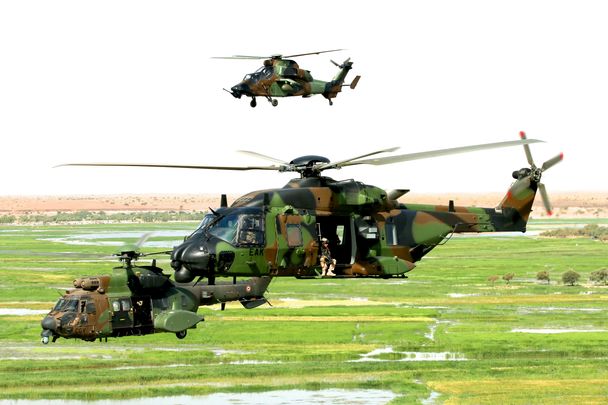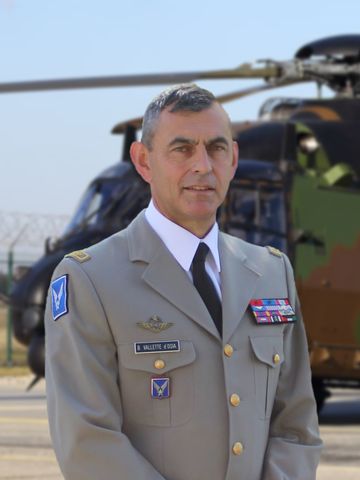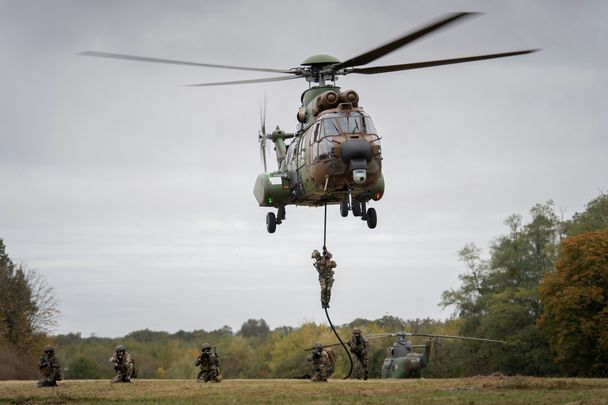Interview with French Army Light Aviation Commander: “We must prepare ourselves for much tougher engagements”


Général Bertrand VALLETTE D'OSIA - COM ALAT
As Commander of the French Military’s ALAT (Aviation Légère de l'armée de Terre) since 2019, General VALLETTE d'OSIA, is responsible for a fleet of 285 helicopters and 13 fixed wing aircraft. He explains the essential development priorities for the French army’s aviation in the years to come.
What support do helicopters offer to militaries?
GEN. VALLETTE D’OSIA: The land commander expects his aviation combat arm to be a fast method of disrupting an enemy. For example, this could allow the engagement of first echelon forces and to avoid their destruction by a well-organised enemy firing from afar. A combat helicopter’s main quality remains its lightning speed and its ability to generate surprise. This remains a main topic of interest for the industry. In the coming decades, confrontations will probably take place in a more transparent battlefield where helicopters will be more exposed.
How important will Manned-Unmanned Teaming (MUM-T) be for military Helicopters?
G. V. D’O.: Whereas developing MUM-T will undoubtedly be important, the helicopters we already have are able to cooperate with all tactical units on the battlefield; they represent a coherent answer in terms of performance, speed, endurance, connectivity and weapon systems. Manned combat aircraft will remain at the centre of air combat until at least 2045, matching the ambition to stand ready to engage whenever required and according to our ALAT motto “de la terre par le ciel”, from the earth via the sky.
What are the development priorities for the French military?
G. V. D’O.: We must prepare ourselves for much tougher engagements, against enemies close to our technological level. To defeat your enemy, you must first respect them and this means upgrading our air combat capabilities. The current replacement of the Puma by the Caïman and from 2027, the Gazelle with the H160M Guépard, represents the end of the previous generation of helicopters.
The NH90 Caïman helicopter is combat proven in severe conditions and has strong development potential to meet future challenges. In 2025, it will make a qualitative leap forward to the Special Forces standard, which I am very confident about. For example, the NH90 will be used to lead operations in degraded visual environment (DVE), allowing us to go further with greater security. The mid-life upgrade of our fleet from 2030 will also enable us to fully access collaborative fighting and interoperability with Unmanned Air Vehicles.
How important is maintenance to military operators?
G. V. D’O.: With more complex aircraft, maintenance is a major issue that could prevent having the necessary number of helicopters in the right place, at the right moment. We are looking at becoming more agile through the dynamic management of our assets. By gathering in the same place people responsible, at state and industry level, for maintenance issues, we are now achieving remarkable improvements regarding aircraft availability.

A soldier uses a winch to disembark a French Cougar
What do Airbus’ helicopters offer to militaries that can make a decisive operational impact?
G. V. D’O.: By supplementing our leaders’ tactical sense with reliable, high-performing aircraft, strategists can devise unexpected manoeuvres. The Airbus H160M Guépard offers a significant qualitative leap in the way we infiltrate and recce in order to engage in deep operations. The Guépard will be resilient, able to connect to an air-land network, and interoperable with drones (MUM-T). It will enable us to outperform an adversary until the arrival of disruptive technologies that we can expect in 20 or 30 years.
The H160M and Tiger helicopters will also be complementary. The Tiger has a wide operational experience acquired through many deployments. From 2030 until 2050, its MK3 standard upgrade gives us a combat proven aircraft, with a high end strike capacity, firing beyond visual contact, with an interesting air-to-air capacity that is renewed with Mistral 3 and will have the capacity to collaborate and interoperate with UAVs.